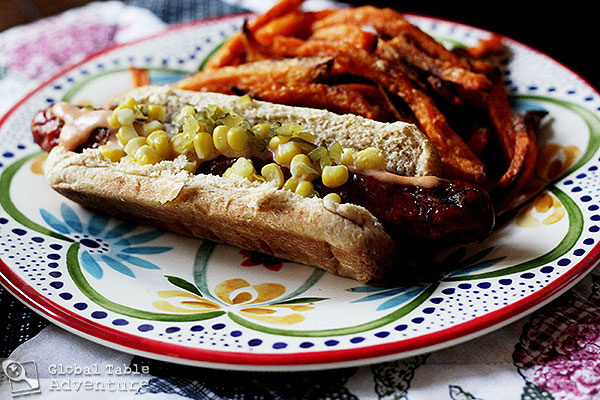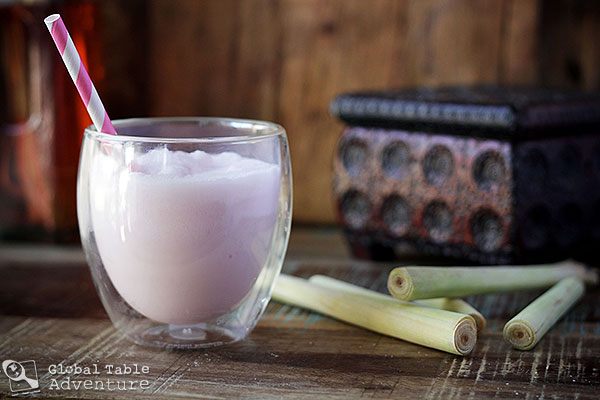
Bzzzz, bzzzz, bzzzz. If the noise meant honey was on the way, that’d be one thing. But that’s not the case this week. Our annual Crow/Martin family vacation to Beaver’s Bend wouldn’t be complete without bees. And by bees, I mean hundreds upon hundreds of bees. It’s really hard to tell in the video, but as soon as I set out our spread from Uruguay, we were as good as swarmed. Let’s just say, we could have never gathered for this photo if food was anywhere nearby: After ten minutes? The leftover Martin Fierro treats were covered with the yellow and black buzzers. One was swimming in the salsa. Another stung my husband and Grandma Martin, though the children, thankfully, were left unharmed. Before the bees could claim any more victims, we retreated into our cabin. I take the over-enthusiastic bees as a happy omen. You see, in Uruguay, the bees do a lot better than North American ones. They aren’t dying off in mysterious numbers. They live long and prosper. Maybe the secret is the …
Read More
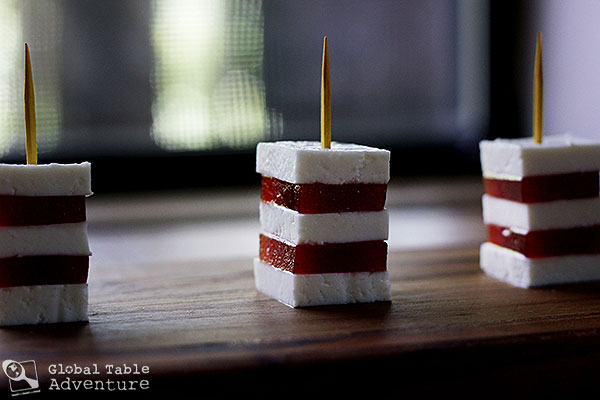
Recipes usually evolve over a long period of time, but today we explore a recipe that one man changed forever. In the late 19th century, José Hernández wrote stories about gauchos, freedom, and love from his home, in Argentina. Gauchos are like the equivalent of the American cowboy: men who’s spirits are forever roaming. His most famous character was Martin Fierro (so famous, in fact, that when the author, Hernández, died, the people announced that Martin Fierro had died, too). Though his stories spoke to the people, he spent much of his life as an exile in Uruguay. As much a creature of habit as any other man, the author became known for ordering the same dessert – one that reminded him of home, but that also celebrated the local ingredients in Uruguay: He always ordered a certain dessert modeled on the popular Argentinian sweet known as Vigilante, which consisted of slices of cheese and sweet-potato paste. The dessert’s curious name derived from the eighteenth- and nineteenth-century policemen who ate cheese with sweet- potato paste because …
Read More
Yes, that’s corn on a hot dog. Listen, friends: if you’re going to have a hot dog, you might as well have a Uruguayan one. Sure, it might just cost a buck or two, but… They’re amazing. Dramatic. Game changers. If this seems like a lot of responsibility for a hot dog, that’s because it is. The pancho’s success is not so much about the meat, though it’s true: the “dog” is usually bigger and better than your average hot dog (it sticks out a good inch or two on either side of the bun). But when it comes down to it, the pancho is all about the toppings. At many pancho stands, you’ll find some combination of corn, melted cheese, relish, salsa, and especially “salsa golf,” which is a blend of mayo and ketchup. You can eyeball the salsa golf: aim for half of each… and it’ll be pale pink. There’s not much of a recipe…. simply grill a batch of extra-long hot dogs, provide a small bowl of each topping, and let your guests …
Read More
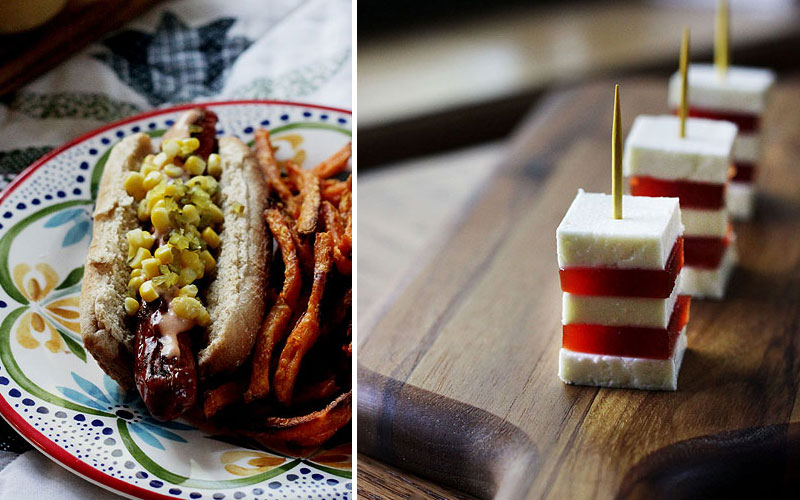
Ah, Uruguay. I kept this menu nice and simple for two reasons. First, we’re only a few weeks away from our #GlobalTableExperience on October 12, 2013, where we’ll serve food from more than 160 countries on a single string of tables. I’m spending every ounce of free time getting the details ready, so that you and your loved ones can enjoy a bite of the world. Even if you can’t make it, make sure you read about how you can be involved in spreading our message of peace and understanding through food from wherever you are! Second, we were on a little family vacation in Southeast Oklahoma when I cooked this meal, so I wanted everything to be easily prepared (with a minimum of equipment). The results? Simple & tasty. Two of my favorite words. All recipes and the meal review will be posted throughout the week. Uruguayan Hot Dog | Pancho [Recipe] There’s nothing extraordinary about a hot dog, unless you consider the toppings on this one, particularly the sauce. This one recipe will keep your BBQ’s …
Read More

[Recipe] I’ve been saying “Uruguay” wrong my entire life. Apparently, it’s “oooo-rah-gway,” as in, “oooo” that food looks good. Located in South America, Uruguay is made of gentle hills and a glistening coastline. As with much of South America, this is a meat-lover’s paradise. Beef is the specialty of choice, though blood sausages and other offal are included as well. In this, it reminds me of Argentina (which we cooked three and a half years ago!). More mainstream choices include BBQ, like carne asada… though, even a good hot dog (called pancho)[Recipe], is worthy of the hungriest stovetop travelers. The cattle are raised in the heart of the country, while produce like corn and tomatoes grow on the coastal plains. For dessert, there’s no stopping their love of flan, alfajores, and a layered cheese and fruit paste treat, called Martin Fierro [Recipe]. Wash it all down with a strong cup of yerbe mate tea or clericó, which is like a white sangria, made with fruit juice and wine. Then, when all is said and done, perhaps …
Read More
Our little family went to Austin, Texas this week to watch the Moto GP race. Fourteen countries were represented and we had a great time! Anyway, the trip cut short our work week, so you’ll find most of our meal review in the video this week. That being said, I do have a short question for you to ponder this week… and I’d love to hear your thoughts in the comments. What do you hope they say about you when you are gone? Do you hope they point out your many accomplishments at home, work, and beyond? Do you secretly (or not so secretly) hope people cry? Or do you hope they laugh? The very thought of someone laughing at a funeral sounds twisted and wrong, but it doesn’t have to be. An old proverb from Suriname suggests this most poignant idea: “Where there is death, there must be laughter.” What do these proactive words mean to me? Well. We need the good with the bad. We need joy with sorrow. We need to celebrate the …
Read More
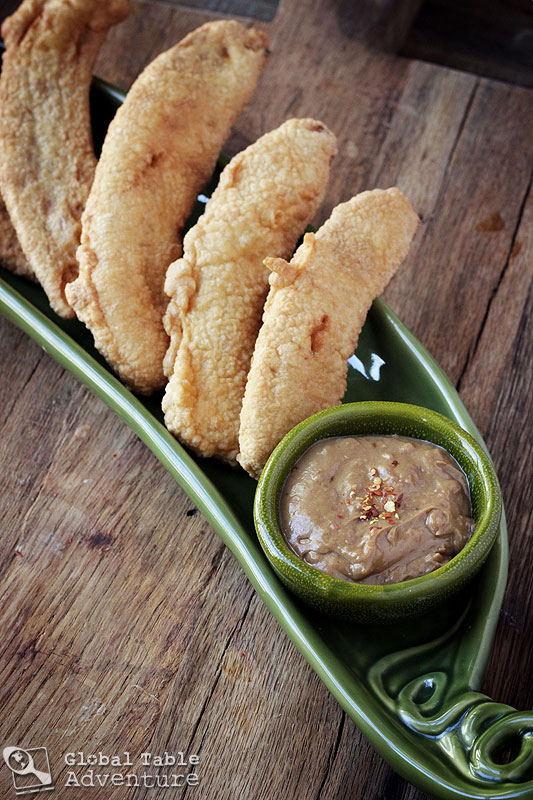
Bakabana is a traditional treat in Suriname. All you do is take very ripe plantains (i.e. blackened), deep fry them, and dust the crispy, fried goodness with powdered sugar. Alternatively, you can serve them with homemade peanut sauce. The result is a crispy-on-the-outside, soft-on-the-inside, finger-licking snack. What could go wrong? (Actually, a lot. I made this recipe three times, before I finally figured out that I needed cornstarch to make the batter crispy. For reference see below. The piece on the left is an all flour batter, the lighter piece on the right is half flour, half cornstarch – and much crispier… …I also made a really bad peanut sauce…so bad I had to toss the recipe. Thankfully, I have an amazing peanut sauce recipe… my old standby, from when we cooked Indonesia. If you decide to make this peanut sauce, it will look like the picture below, not like the one pictured with the plantains.) Thanks to our readers on Facebook, Megan H. and Natalie F., who suggested we try Bakabana. This was a fun one. …
Read More
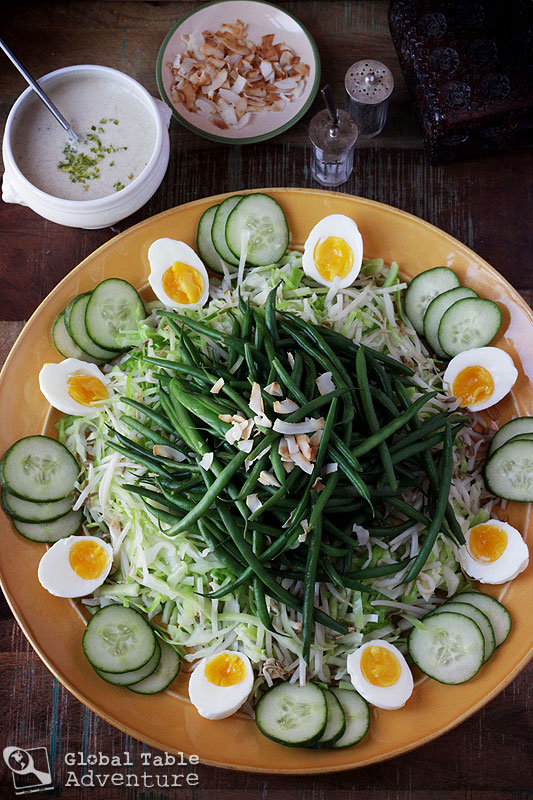
Introducing Geodangan, your answer to healthy munchies. (Honestly, I’m not sure if there’s such a thing as healthy munchies. But if there were, then this is it.) This Asian-style salad that is incredibly popular in Suriname. And for good reason. Don’t be shy. Geodangan is everything spring has to offer – crisp green beans, giant cabbages, golden yolked eggs… with the addition of a coconut, lime, yogurt dressing. (The dressing could also be coconut sambal, a spicy shredded coconut condiment.) Either way, you’ll feel like your in Suriname… by way of Indonesia. And that’s definitely a good thing. Today’s recipe for Goedangan is adapted from Holidays of the World Cookbook for Students; they suggest serving the salad for a traditional Surinamese lunch, which I think sounds just lovely. Serves 6 Ingredients: For the salad: 1 small head cabbage, cored, shredded and blanched 1 lb French green beans 1/2 lb mung bean sprouts 1 hard boiled egg per person 1 cucumber, sliced shredded coconut or coconut flakes, optional For the dressing: 1/2 cup coconut milk 1/2 cup yogurt …
Read More
Lemongrass. Coconut milk. Slushie. Pink. Pink. Pink. Hello. The weather’s been heating up lately, so when I happened up this Dawet recipe so beloved in Suriname, I knew we had to try it. When I discovered it was also enjoyed in slushie form? I did a little dance. Slushies are always a good idea. The refreshing, tropical drink is made with an easy, homemade lemongrass syrup, a swirl of coconut milk, and a splash of water (or ice, if making a slushie). Dawet originates from Asia, and is especially popular in Indonesia. The drink was brought to Suriname and popularized as a result of colonization and immigration. In my research, I found several photos of the dawet in Suriname, and it seems the slushie is popular among street vendors. Ava and her friend were fans. There’s so many ways to make this drink. I suggest making the syrup and then toying with how much coconut milk you’d like, versus how much ice. The quantities given are what worked for me, but there really are no …
Read More
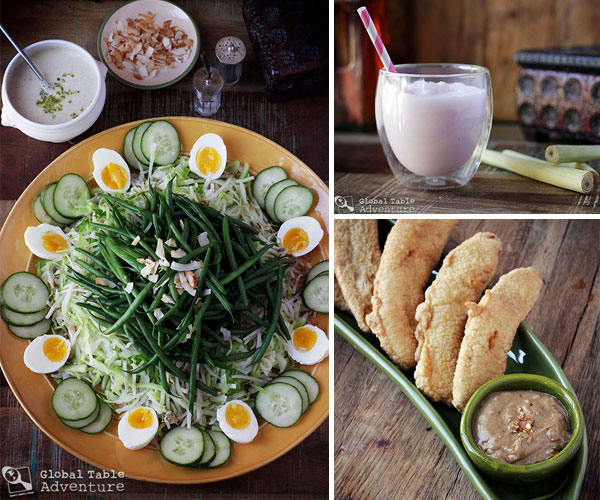
Don’t be confused. Though this menu looks and feels quite Asian, these dishes represent Suriname as well as any other. We have everything from the traditional plantain fritters so beloved in South America, to Asian-inspired cabbage salad and even an addictive lemongrass slushie. Coconut milk is the common thread in the drink and the salad – the result being sweet for the drink, spicy for the salad dressing. All recipes and the meal review will be posted throughout the week. Mixed Vegetable Salad with Coconut Dressing | Goedangan [Recipe] Hello, spring! Enjoy this bright and fresh salad of cabbage, green beans, eggs, mung bean sprouts… all dressed up in a coconut yougurt dressing. Battered Plantains with Peanut Sauce | Bakabana [Recipe] Indulge in Surinamese comfort food: deep fried plantains. Serve ’em up with either powdered sugar or peanut sauce. (Vegan) Lemongrass Dawet Slushie [Recipe] You’ll be pretty in pink while you sip this lemongrass, coconut milk slushie (or mix things up and serve the mix on the rocks). (Vegan) P.S. Random Tidbit about Suriname: rumor has it, any …
Read More

Welcome to Suriname; welcome to South America. We haven’t cooked this part of the world in many months. And, in many ways, today might feel like we’re still somewhere else. That’s because Suriname’s food scene is all about fusion. A melting pot, of sorts. The food is at once typical of South America, but also laced with components from Indonesia, China, Africa, India, and even Europe. Surely, this is because of Suriname having once been a Dutch colony. Long ago, the Dutch connected the tropical rain forests and swampy flatlands of Suriname with these many regions of the world. Now, in the big cities, you can find everything from dhal, roti and chutney to creole stews and cassava breads… Can I just point out that many restaurants of Paramaribo, the capital city, serve curry and chow mein? So fun. Maybe you’d like a side of deep fried plantains and spicy peanut sauce to go with that [Recipe]? Sure thing. In Suriname, you’d be as likely to cool off with Goedangan (a coconut-laced cabbage salad) [Recipe]and a summertime sipper, like lemongrass infused …
Read More
THE SCENE Ava’s on to us. When we pull up to the dining table on Thursday nights she knows. It’s Global Table Adventure night. In fact, she strung together these words for the first time this week: “”Gwobal” Table Adventure (“can I go there, mama?”). When a three year-old child knows that she is expected to try an unusual meal every week, one of three things can happen. 1. She can go for it wholeheartedly. 2. She can eat with normal interest/disinterest, depending on the day. 3. She can rebel. With tears. Man, that last one’s a doozy. Two and a half years ago, when we started this adventure, Ava simply ate what we gave her. Sure, she spit some of it out (she was a baby after all), but overall she was more open than we were to trying new foods. She had zero preconceived notions. Now that she’s hit the ripe ol’ age of three, Ava is way less accepting than she used to be. While still extremely open minded compared to her peers, she’s …
Read More



